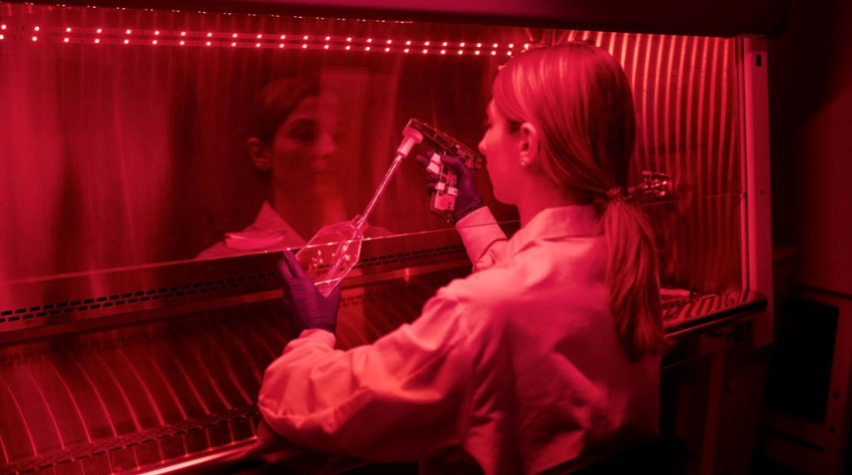
Disclosure: This post is sponsored by Prolific Machines and reflects their views, opinions, and insights.
Optogenetics technology is an emerging tool for researchers to control cellular function. Over the past several years, it has had a strong impact in a variety of applications, including but not limited to: cell signaling and dynamics, developmental biology, microbial transcription, cancer signaling and drug response, control of T-cell receptor signaling, and materials science.
The 4th Optogenetic Technologies and Applications Conference, organized by the Society for Biological Engineering (SBE), will bring together communities of researchers who are either working in optogenetics or who stand to benefit from utilizing optogenetic tools for various biological applications. This conference provides unique value to realizing the potential of the field across a variety of disciplines.
We recently caught up with Deniz Kent, PhD, Co-Founder and CEO at Prolific Machines, to discuss how the company is using optogenetics tools in commercial applications.
Can we start with your perspective on the state of biomanufacturing?
I think it’s remarkable what has been achieved, but I also believe there’s untapped potential. Biology could do much more than it’s currently doing and it could also do the things that it’s currently doing, better.
For the last few decades, biomanufacturing has relied on molecules to control cells. These molecules tend to be in one of two categories: proteins or chemicals. They’re mixed up, kind of like cocktails, and added to cells. Different cocktails do different things. This has worked reasonably well and has led to the modern biotech industry. However, I believe there’s a lot more that cells could do that we currently aren’t using them for. We need a better toolkit to control cells that move away from molecular to non-molecular inputs.
What is Prolific Machines doing to solve these issues?
Prolific Machines is building a new toolkit to control cells using light. Light systematically solves the myriad challenges created by our reliance on molecular inputs: high costs, sterility issues, yield limitations, lack of reproducibility, irreversibility, delayed responsiveness, inability to optimize, and imprecise control — especially on the time and space axis.
Light can solve these problems because it’s the cheapest possible input into biology, and it’s also extremely controllable. It allows for very precise control based on where and when you shine it and the intensity with which you shine it. The temporal control provides significant yield advantages, and the space access allows for precise patterning. It's also extremely reproducible, sterile, and easy to optimize.
The optimizability piece is really important, given the closed-loop control, which is only possible because of light. Prolific is building the world’s first tools that will be able to truly control subcellular biology selectively. We have tools that can turn on or off cell receptors, activate a cytoplasmic enzyme, cascade precise gene editing, dynamically control protein production, and turn one type of cell into another type of cell.
Based on these tools, how exactly does Prolific Machines use light?
We currently offer four tools to our customers: OptoReceptor activates receptors, OptoMeta tunes metabolism, OptoPro controls protein production, and OptoDiff turns one type of cell into another type of cell.
Each of these requires a specific engineering and light patterning scheme, and this is really the magic of Prolific. It’s not just that we use light, it’s the specific light patterns we employ to enable specific applications, and how we change these light patterns throughout a bioproduction run to precisely control cellular behavior and output. We can tune our signaling to support the cells’ evolving needs at different points, allowing for unparalleled control. We can also optimize these actions over time using proprietary AI, adding further fine tuning capabilities to our process.
Where is Prolific Machine’s technology being applied?
There are two industries we’re currently having active conversations about with prospective partners. One is advanced nutrition. We’re speaking to meat and dairy companies about using our bovine cell lines to support the production of high-value nutritional proteins and cultivated products. There’s so much you can do with our tools here.
The second is our biomanufacturing platform. We’re speaking with biopharmaceutical companies and CDMOs about using our light-inducible switches in CHO cell lines to improve and enable production of therapeutic proteins with key advantages in difficult-to-express protein production.
We recently received a grant from the Bill & Melinda Gates Foundation to develop an antibody therapeutics platform to produce more affordable monoclonal antibodies, to increase access to these life-saving drugs in vulnerable populations in low- and middle- income countries. There are also several future opportunities on our radar, including tissue and organ engineering, cell therapy, and many more.
How do you work with these partners?
We have designed our photomolecular platform to be very easy for partners to use. It’s comprised of three parts: genetic tools, hardware, and software, providing an easy-to-integrate infrastructure.
Our platform is cell line agnostic, and we offer high performance cell lines (bovine and CHO) partners can use, or they can choose to use their own. The hardware is plug and play with a partner’s existing process, and the software is embedded into the hardware to signal, sense, and optimize. With the AI component of our software, we are teaching machines how to control and grow cells so that eventually they’ll be able to run autonomously.
Together, our platform not only solves challenges created from molecular inputs, but innovates on existing CapEx, provides higher yields, and builds autonomy into how you run these bioreactors.
I think the combination of those things will take biotech from being something that doesn’t necessarily and explicitly touch that many people’s lives, to biotech being used everywhere and touching everything.
Interested in learning more from Prolific Machines? Come meet with them at the 4th Optogenetic Technologies and Applications Conference in Boston, MA, September 10–12, 2024. Learn more about the conference and register today.
Funding is available to help sponsor some registrations and travel costs. Students/post-docs and early-career professionals are encouraged to apply here. This grant is made possible by the AIChE® Foundation and other generous supporting organizations.

Deniz Kent, PhD
Deniz Kent, PhD is Co-Founder and Chief Executive Officer of Prolific Machines, the biotechnology innovator using light to unlock unprecedented cellular control. Prolific harnesses light to produce everyday essentials more efficiently — from food and lifesaving drugs to novel biosolutions. Read more
Disclosure: This post is sponsored by Prolific Machines and reflects their views, opinions, and insights.
About SBE
Established in 2004, the Society for Biological Engineering is a technological community for engineers and applied scientists integrating biology with engineering. Members of SBE come from a broad spectrum of industries and disciplines and share in SBE’s mission of realizing the benefits of bioprocessing, biomedical and biomolecular applications. Learn more about SBE


